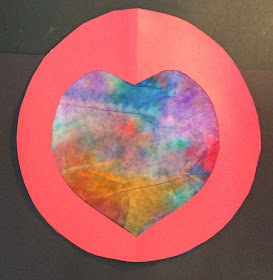Last summer I took an
Art of Education course where we talked about critiques. I have adapted the use of TAG critiques into my classroom this year for grades 3,4, 5. My goal it to get them thinking more deeply about their own art and the art of their peers and famous artist by writing about them. Here is what TAG stands for:
T: tell something you like
A: ask a question
G: give some advice
For their first experience in writing a TAG, I used one of my own pieces of art that I had created as an example for a project we had been working on in class. Since I work in two buildings, I use the example from the opposite buildings so the students would not recognize it as mine. I refused to divulge who the artist was, saying only it had been made at the other school. It was interesting to see how seriously they critiqued my work and gave me a great deal of insight into their thinking processes and the information they had retained from the lesson. For one of my personal student goals, I had pledged to practice TAG with students four times over the course of the year.
To have students apply understanding of the purpose of Art making by writing artist critiques in the form of a TAG. Critique their own work, the work of peers, and the work of professional
artists, and demonstrate an understanding of the formal, cultural, and historical contexts of the work (National Art Standard - Responding, Anchor standards #7, #8, #9; MA: Re7.1.4, MA: Re 8.1.4; MA:Re 9.1)
For their second tag, we wrote based on the Artist Trading cards we received from the Mini Matisse' card exchange. Throughout this process, students have wanted to be able to communicate more directly with the artist of the work they were viewing. For their third TAG, I have decided to pair them with a classmate. They will exchange papers and TAG an actual work from that classmate. We will call it a Valentine TAG because these will be happening the week prior to February break which also occurs during Valentine's week. I am sharing the worksheet I have put together for them.
With this being our third attempt at a TAG, I will be looking at the language they are using as they talk the art, specifically the use of Art Vocabulary. Please feel free to download and use my handout to practice TAG critiques with your students.
 I usually use Haring with fourth grade students. They have done a variety of projects over the years generally focusing on the simplicity of line in Haring's images as well as the implied movement in his work.
I usually use Haring with fourth grade students. They have done a variety of projects over the years generally focusing on the simplicity of line in Haring's images as well as the implied movement in his work.











